Embark on a captivating journey of DIY garden projects, where creativity and simplicity intertwine to transform your outdoor haven into a breathtaking oasis. From beginner-friendly endeavors to innovative decor ideas, this guide empowers you to cultivate a garden that reflects your unique style and brings joy to your everyday life.
As you delve into the world of DIY garden projects, you’ll discover the secrets to creating enchanting vertical gardens, mastering container gardening, and illuminating your outdoor space with captivating lighting schemes. Practical tips on garden maintenance ensure that your garden thrives, providing you with a sanctuary of beauty and tranquility for years to come.
DIY Garden Projects for Beginners
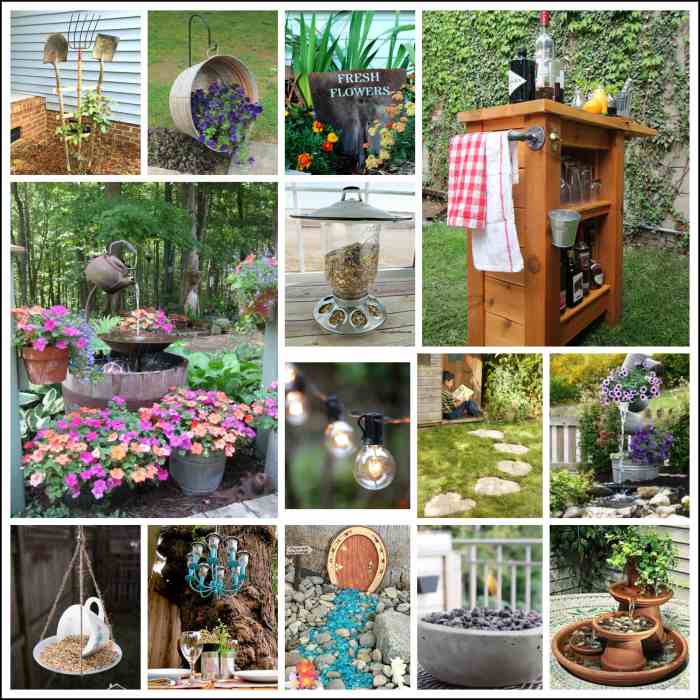
Embark on the delightful journey of gardening with these beginner-friendly projects. Whether you’re a first-time planter or eager to expand your green thumb, these accessible endeavors will guide you towards a thriving outdoor haven.
To embark on these projects, you’ll need a few essential tools and materials. Gather a trowel, spade, watering can, gardening gloves, and a selection of seeds or plants that suit your climate. Remember, gardening is an experimental process, so don’t be afraid to adjust these projects to your preferences and available resources.
Growing Herbs in Containers
Cultivating herbs in containers is an ideal way to add flavor and freshness to your culinary creations. Choose a container with drainage holes and fill it with well-draining potting mix. Sow the herb seeds or transplant small seedlings, spacing them according to the seed packet instructions.
Water the herbs regularly, ensuring the soil remains moist but not soggy.
Creative Garden Decor Ideas
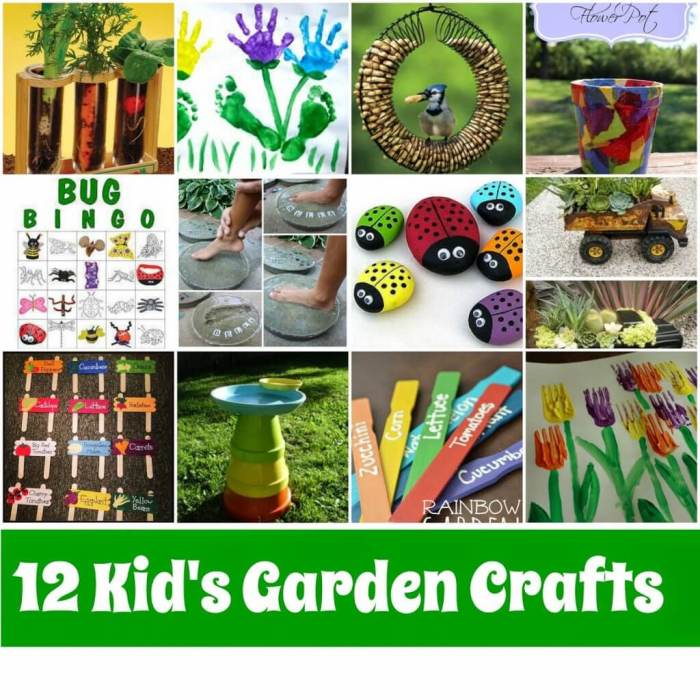
Transform your garden into an enchanting oasis with innovative decor ideas. Repurpose everyday items and embrace unconventional materials to create unique focal points. Discover the beauty of sustainable practices in garden design, enhancing aesthetics while promoting environmental responsibility.
Upcycled Treasures
Breathe new life into discarded items by upcycling them into charming garden accents. Old tires become vibrant planters, while broken pottery pieces create whimsical mosaics. Transform discarded bottles into wind chimes, adding a touch of melody to your outdoor space.
Natural Elements
Incorporate nature’s bounty into your garden decor. Arrange driftwood to create rustic borders, or use fallen branches as unique plant supports. Plant trailing vines around tree trunks to mimic the grandeur of a forest canopy.
Sustainable Solutions
Embrace sustainability in your garden decor by using eco-friendly materials. Choose recycled wood for planters, or create compost bins from repurposed pallets. Install solar-powered lights to illuminate your garden without harming the environment.
Vertical Gardening Techniques
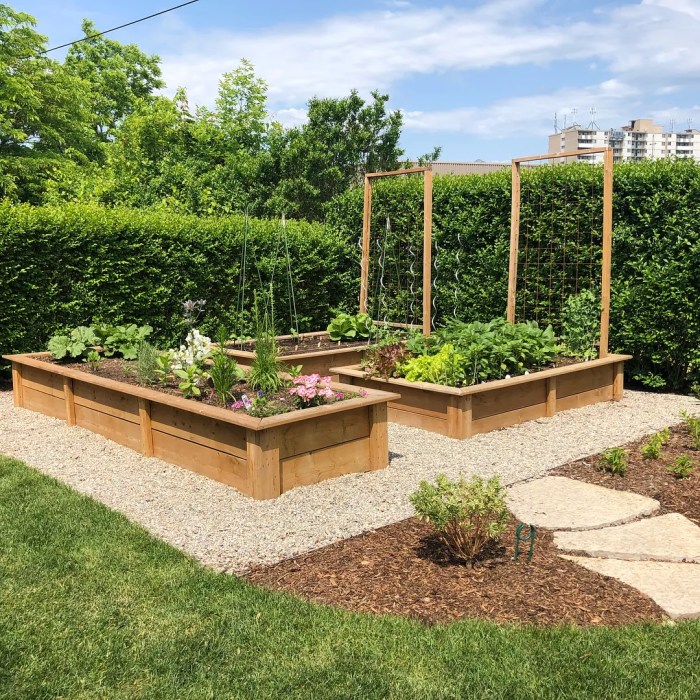
Vertical gardening is a method of growing plants vertically, utilizing vertical space to maximize plant growth and create unique and space-saving garden designs. It involves training plants to climb upwards on structures or trellises, allowing them to grow vertically rather than spreading horizontally.
DIY garden projects can bring a touch of nature and tranquility to your outdoor space. If you’re looking for a fun and rewarding project, consider building a duck house. Duck house ideas range from simple to elaborate, so you can find one that fits your skill level and budget.
Not only will a duck house provide a cozy shelter for your feathered friends, but it will also add a charming touch to your garden.
Vertical gardening offers numerous advantages, including increased space utilization, improved plant growth and health, aesthetic appeal, and enhanced biodiversity. It is particularly beneficial in urban areas or small spaces where horizontal space is limited.
DIY garden projects are a great way to add some personal flair to your outdoor space. However, if you live in an area with a lot of frogs, you may find that they start to invade your garden. If you’re looking for a way to keep frogs away from your plants, there are a few things you can do.
You can try using a natural frog repellent, such as vinegar or coffee grounds. You can also try to remove any standing water from your garden, as this can attract frogs. If you’re still having trouble keeping frogs away, you may want to consider using a commercial frog repellent.
For more information on how to keep frogs away, check out this helpful guide: how to keep frogs away. Once you’ve taken care of the frog problem, you can get back to enjoying your DIY garden projects!
Materials for Vertical Structures
Building vertical structures for vertical gardening can be done using various materials, each with its advantages and disadvantages:
- Wood:Wood is a popular choice for vertical structures due to its versatility, durability, and ease of customization. It can be used to create trellises, raised beds, and other support structures.
- Metal:Metal structures are sturdy and durable, but they can be more expensive and require special tools to work with. They are often used for larger vertical gardening systems or commercial applications.
- Plastic:Plastic structures are lightweight, affordable, and easy to assemble. However, they may not be as durable as wood or metal and can be susceptible to fading or cracking over time.
- Fabric:Fabric structures are a lightweight and portable option for vertical gardening. They are often used for small-scale systems or indoor applications.
Suitable Plant Varieties
Choosing the right plant varieties is crucial for successful vertical gardening. Some plants are naturally suited for climbing and growing vertically, while others require additional support or training.
- Vines:Vines, such as ivy, clematis, and morning glory, are ideal for vertical gardening as they have natural climbing mechanisms.
- Climbing Plants:Climbing plants, like tomatoes, cucumbers, and beans, have tendrils or suckers that allow them to cling to supports and grow upwards.
- Espaliers:Espaliers are trained fruit trees that are grown on a flat surface or trellis. This technique allows for increased fruit production and space utilization.
Container Gardening Essentials
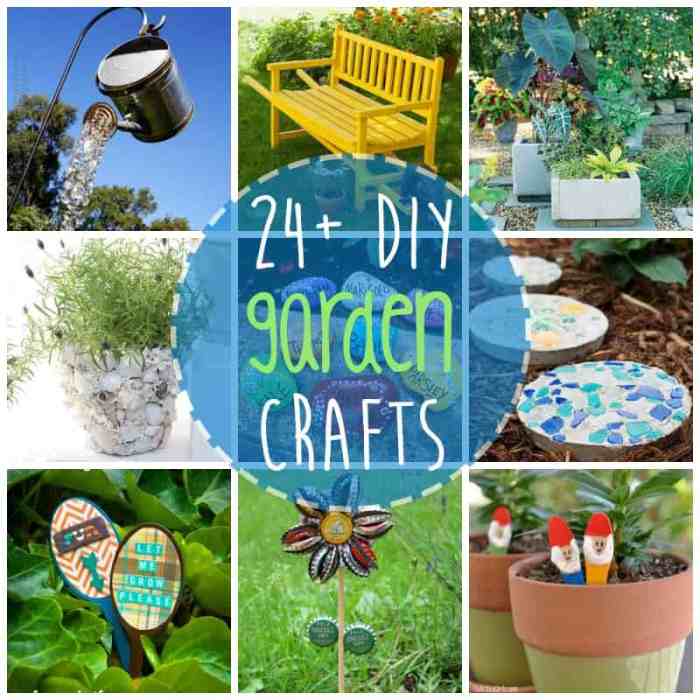
Container gardening offers a convenient and space-saving solution for urban dwellers and those with limited outdoor space. It allows you to cultivate a wide variety of plants in containers, transforming balconies, patios, and even windowsills into vibrant oases.The advantages of container gardening include portability, flexibility, and the ability to control the growing environment.
However, it also presents challenges, such as limited soil volume, potential for rootbound plants, and the need for more frequent watering and fertilization.
Selecting the Right Containers
Choosing the appropriate containers is crucial for the success of your container garden. Consider the size, shape, and material of the container in relation to the plant’s root system and growth habits.* Size:The container should provide ample space for the plant’s roots to grow and spread.
DIY garden projects are a great way to add some personal flair to your outdoor space. Whether you’re looking to create a lush oasis in your backyard or simply add some greenery to your patio, there are plenty of easy and affordable projects to choose from.
From building raised garden beds to creating a vertical garden, there’s something for everyone. So get creative and start planning your next DIY garden project today!
Overcrowding can stunt growth and lead to rootbound plants.
Shape
Round or square containers are suitable for most plants, but some may prefer wider or deeper containers depending on their root structure.
DIY garden projects can add a touch of whimsy and nature to your outdoor space. Whether you’re building a birdhouse or a raised bed, these projects can bring a sense of accomplishment and joy. If you’re looking to attract wildlife to your garden, consider incorporating features that appeal to squirrels, such as bird feeders or nesting boxes.
Check out our guide on how to attract squirrels for more tips. These furry creatures can add a lively touch to your garden while helping to disperse seeds and control pests. By combining DIY garden projects with wildlife-friendly features, you can create a thriving and vibrant outdoor oasis.
Material
Containers can be made from various materials, including plastic, ceramic, terracotta, and wood. Plastic containers are lightweight and durable, while ceramic and terracotta containers provide insulation and drainage. Wooden containers are aesthetically pleasing but require more maintenance to prevent rot.
Soil Preparation, Watering, and Fertilization
Proper soil preparation is essential for container gardening. Use a well-draining potting mix specifically formulated for containers. Avoid using garden soil, as it can become compacted and restrict root growth.Watering is crucial for container plants as they have limited access to water.
Water thoroughly when the top inch of soil feels dry to the touch. Avoid overwatering, as it can lead to root rot.Fertilize container plants regularly, especially during the growing season. Use a balanced fertilizer diluted to half strength. Follow the instructions on the fertilizer label to avoid overfertilization.
Garden Lighting Ideas
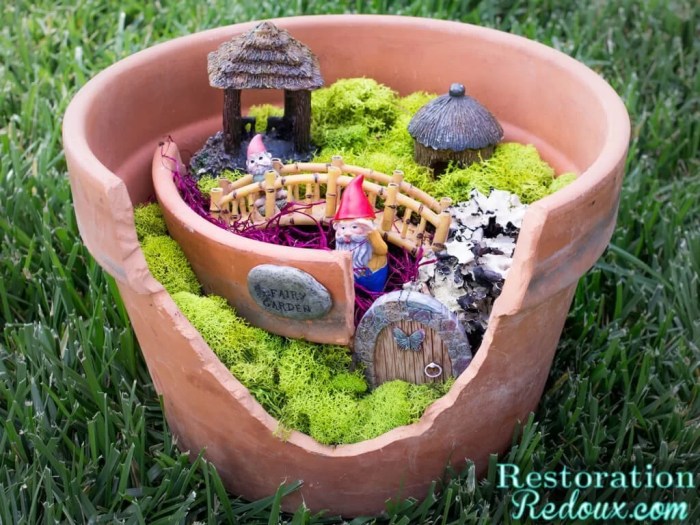
Garden lighting transforms outdoor spaces into enchanting havens, extending their enjoyment beyond daylight hours. It enhances safety, adds depth and dimension, and creates a magical ambiance that invites relaxation and awe.
The types of garden lights are diverse, each serving a specific purpose. Path lights illuminate walkways, guiding visitors safely through the garden. Spotlights highlight architectural features, sculptures, or focal points, creating dramatic effects. Bollard lights provide ambient illumination, casting a warm glow that defines pathways and seating areas.
String lights add a whimsical touch, creating a festive atmosphere.
Landscape Lighting Principles
Creating a cohesive lighting scheme requires an understanding of landscape lighting principles. Layering different light sources creates depth and interest. Uplighting, which shines light upward, highlights trees and structures, while downlighting illuminates pathways and surfaces. Backlighting adds a halo effect, separating objects from the background.
Consider the color temperature of the lights. Warm light creates a cozy and inviting atmosphere, while cool light enhances clarity and visibility. Choose fixtures that blend seamlessly with the garden’s aesthetic, whether they are traditional lanterns or modern spotlights.
Garden Maintenance Tips
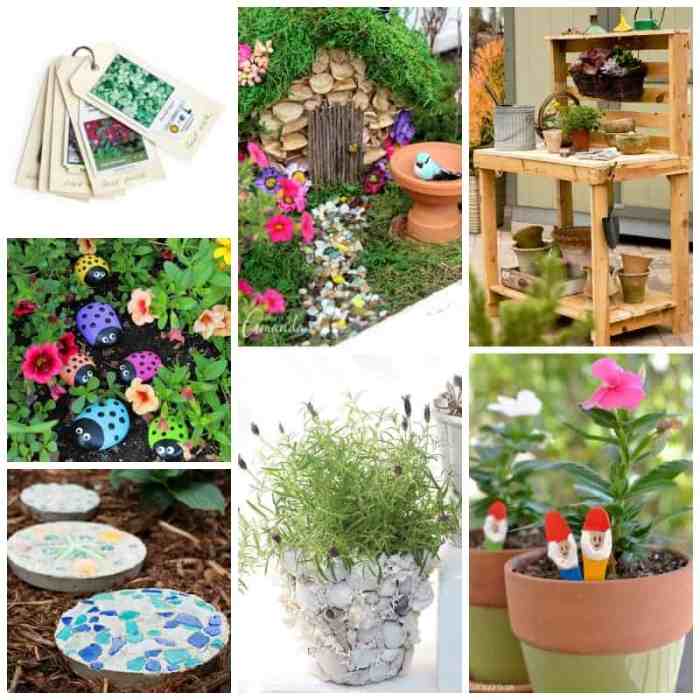
Gardening is a rewarding hobby, but it also requires regular maintenance to keep your plants healthy and thriving. Here’s a comprehensive guide to help you keep your garden in top condition:
Watering
Regular watering is crucial for the survival and growth of your plants. The amount and frequency of watering will vary depending on the type of plants you have, the climate, and the soil conditions. In general, most plants need about 1 inch of water per week, but this can vary significantly.
Check the soil moisture before watering to avoid overwatering, which can lead to root rot.
Pruning
Pruning is the process of removing dead, diseased, or overgrown branches and leaves from your plants. This helps to improve the overall health of the plant by removing potential sources of disease and encouraging new growth. Pruning can also be used to shape and control the size of your plants.
Pest Control, Diy garden projects
Pests can be a major problem for gardeners, but there are a number of things you can do to control them naturally. One of the best ways to prevent pests is to keep your garden clean and free of debris.
You can also use companion planting to deter pests and attract beneficial insects that will help to keep your plants healthy.
Soil Management
The soil is the foundation of your garden, so it’s important to keep it healthy and fertile. One of the best ways to do this is to add organic matter to the soil, such as compost or manure. This will help to improve the soil structure, drainage, and fertility.
Composting
Composting is the process of turning organic waste into a nutrient-rich soil amendment. Composting is a great way to recycle kitchen scraps, yard waste, and other organic materials. The resulting compost can be used to improve the soil in your garden and help your plants grow healthier and stronger.
Mulching
Mulching is the process of covering the soil around your plants with a layer of organic material, such as bark, straw, or compost. Mulch helps to retain moisture, suppress weeds, and regulate soil temperature. It can also add nutrients to the soil as it decomposes.
Ultimate Conclusion: Diy Garden Projects
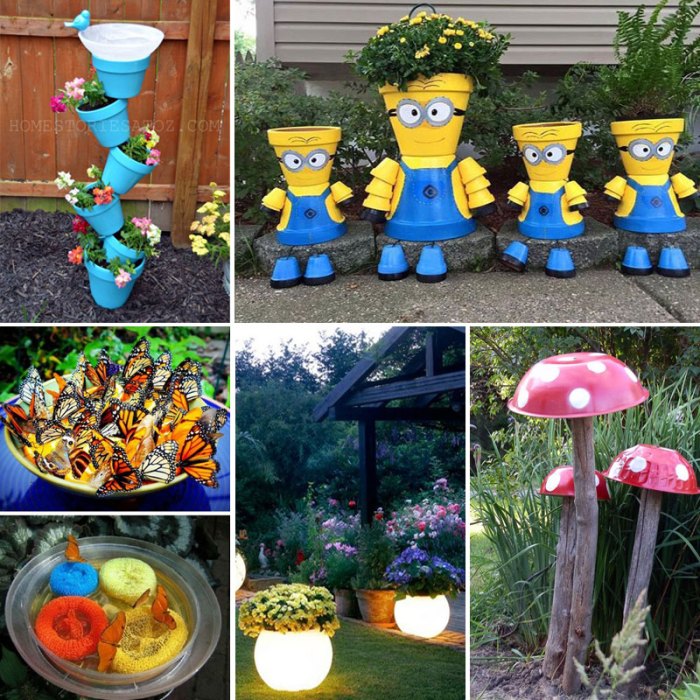
Whether you’re a seasoned gardener or just starting your green-thumbed adventure, DIY garden projects empower you to create an outdoor paradise that reflects your creativity and brings joy to your life. Embrace the transformative power of gardening and embark on a journey of beauty and fulfillment.
